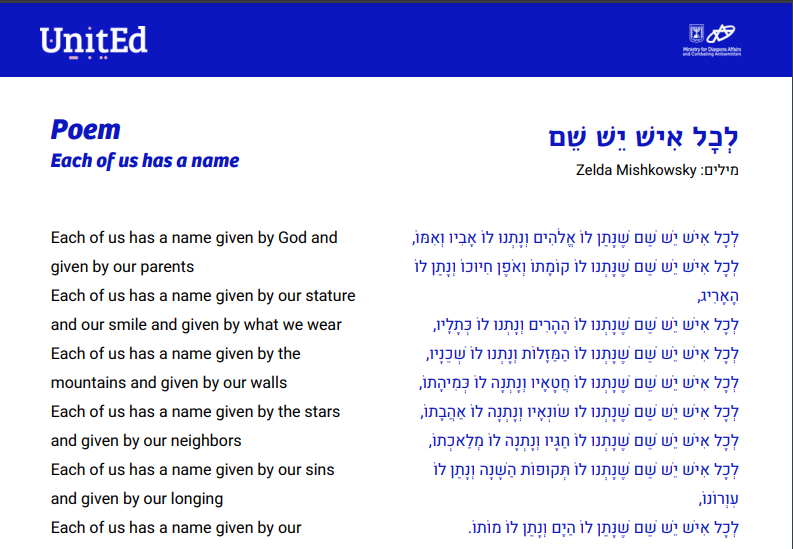Abstract
This is a lesson plan provided by the National Library of Israel.
Whether it is by choice or by necessity, moving to a new country is challenging, especially when the spoken language is not your native tongue.. What tools can be implemented to help new immigrants to Israel learn Hebrew? Since 1948 Israel has welcomed many new immigrants. How has the Israeli government helped its immigrants’ absorption process? In this resource learners will analyze primary resources from the 1950s which the government provided their new immigrants, and then will create a language poster based on vocabulary that would be useful for immigrants today.
The learner will:
- understand why learning Hebrew is essential for Israel’s immigrants
- know how the Israeli government assisted their immigrants in learning Hebrew during the 1950’s
be able to choose which Hebrew words are essential for living in Israel today and create a poster depicting them
| About the National Library and its educational materials:
The mission of the National Library of Israel is to provide a home for items of national, historic or cultural significance. Each of these primary sources serve as unique entry points into the collective memory of the people of Israel as well as the Jewish people worldwide. The education department at the library curates the collection of primary sources and uses them as windows into the past; to foster a deeper understanding of Jewish history, and to enable learners to personalize and connect to earlier events. |
When you click on the National Library of Israel resource link featured above, you will find the following educational building blocks for the creation of a lesson plan:
- A group activity to open the lesson and engage the learners.
- Discussion ideas and/or questions that are designed to get the learners thinking more deeply about the content.
- A creative activity that gives students the opportunity to go beyond learning and analyzing, to crafting something new, that personalizes how they relate to the primary sources featured in the resource.
- The primary sources in this resource have individual links (listed in Expand your horizons below) that provide expanded information. In addition there are nuanced discussion questions that will enable students in small groups to engage independently and effectively in the process of observing, interpreting, and connecting to the primary sources.
Link to the lesson plan:
Learning to be a Local
Student handouts, computer, projector




